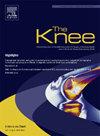Using three-zone flexible cones at the metaphyseal–diaphyseal junction may avoid the need for distal femoral replacement: The floating cone technique
IF 1.6
4区 医学
Q3 ORTHOPEDICS
引用次数: 0
Abstract
Distal femoral replacement (DFR) with megaprostheses is a salvage revision total knee arthroplasty (rTKA) procedure indicated in cases with massive bone defects in the distal femur. As long as these implants achieve fixation only in the diaphysis, the high aseptic loosening rate reported in some series is probably related to a lack of rotational stability. Two patients with extensive distal femoral bone defects with preservation of the metaphyseal–diaphyseal junction underwent rTKA. Instead of performing a DFR with megaprostheses, partially impacted three-zone cones and standard cemented hinged implants were used with the aim of achieving better rotational stability. Both patients showed good evolution after a 12-month follow up. Clinical findings included a normal range of motion (0–100°) without any instability and preserved ability for full weight-bearing ambulation. No signs of prosthetic loosening appeared in the X-rays during follow up. To our knowledge, this was the first time a single partially anchored three-zone cone was used in massive metaphyseal femoral defects. It is an implant-dependent technique that additionally requires the preservation of the metaphyseal–diaphyseal junction, but may avoid the use of megaprostheses in some cases.
求助全文
约1分钟内获得全文
求助全文
来源期刊

Knee
医学-外科
CiteScore
3.80
自引率
5.30%
发文量
171
审稿时长
6 months
期刊介绍:
The Knee is an international journal publishing studies on the clinical treatment and fundamental biomechanical characteristics of this joint. The aim of the journal is to provide a vehicle relevant to surgeons, biomedical engineers, imaging specialists, materials scientists, rehabilitation personnel and all those with an interest in the knee.
The topics covered include, but are not limited to:
• Anatomy, physiology, morphology and biochemistry;
• Biomechanical studies;
• Advances in the development of prosthetic, orthotic and augmentation devices;
• Imaging and diagnostic techniques;
• Pathology;
• Trauma;
• Surgery;
• Rehabilitation.
 求助内容:
求助内容: 应助结果提醒方式:
应助结果提醒方式:


